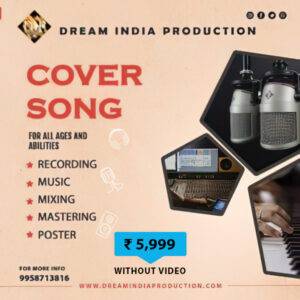Composing for all songs
Original price was: ₹1,599.00.₹999.00Current price is: ₹999.00.
Composing involves the creation of musical ideas, melodies, harmonies, and arrangements. A composer is responsible for creating the structure and content of a musical piece. This process may include.
Description
Composing involves the creation of musical ideas, melodies, harmonies, and arrangements. A composer is responsible for creating the structure and content of a musical piece. This process may include:
1. Melody Creation: Developing a memorable and distinctive tune that serves as the core of the composition.
2. Harmony and Chord Progressions: Building a foundation by combining different chords and creating harmonic progressions.
3. Arrangement: Structuring the different sections of the music (verse, chorus, bridge) to create a cohesive and engaging composition.
4. Orchestration: Deciding which instruments or voices will play specific parts within the piece.
Music production encompasses the technical and creative processes involved in turning a musical composition into a final recorded or live performance. This includes:
1.Recording: Capturing the performances of individual instruments and vocals in a studio environment.
2.Editing: Refining and arranging recorded tracks, fixing timing issues, and ensuring a polished performance.
3.Mixing: Balancing and blending the individual tracks to create a cohesive and sonically pleasing mix. This involves adjusting levels, panning, and applying various audio effects.
4.Mastering: Preparing the final mix for distribution by enhancing its overall clarity, balance, and loudness.
Relationship Between Composing and Music Production:
– Interdependence: Composing and music production are interdependent. A well-composed piece requires effective production to convey its intended emotion and impact.
– Collaboration: Composers often work closely with music producers to achieve the desired sonic qualities in the final recording. In many cases, the composer and producer may be the same person, especially in home recording setups or smaller projects.
– Technology Integration: Advancements in technology have led to the integration of composing and production tools. Digital audio workstations (DAWs) allow composers to produce and arrange their compositions directly within the same software used for production.




